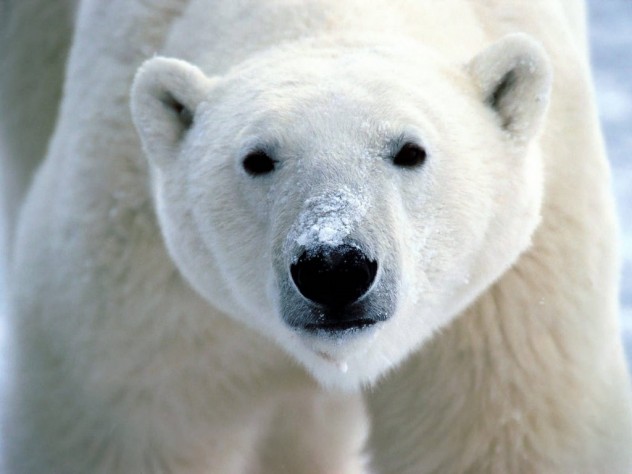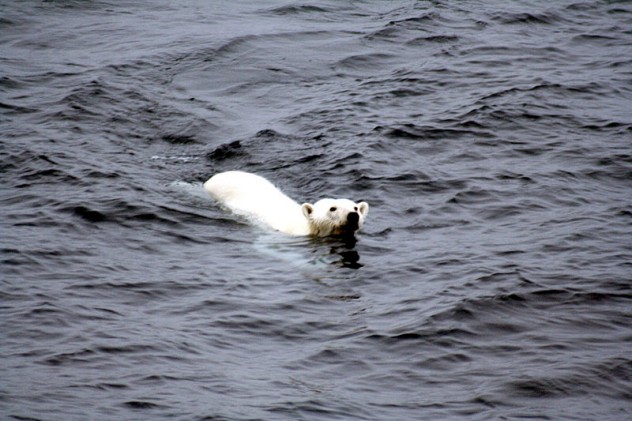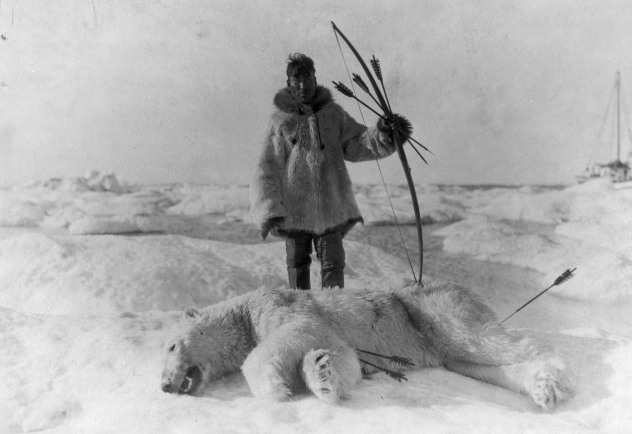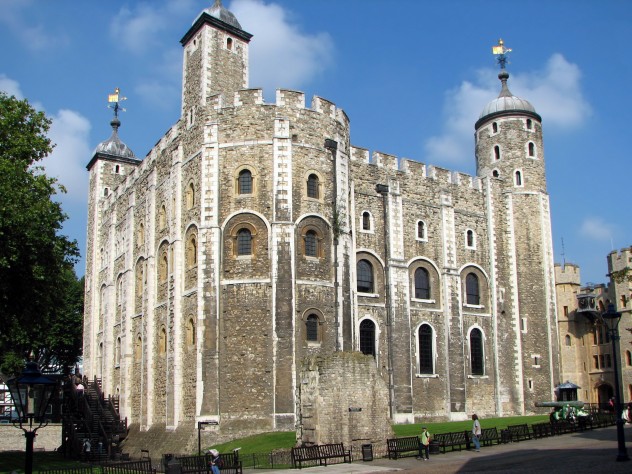 Humans
Humans  Humans
Humans  Movies and TV
Movies and TV The 10 Most Heartwarming Moments in Pixar Films
 Travel
Travel Top 10 Religious Architectural Marvels
 Creepy
Creepy 10 Haunted Places in Alabama
 History
History Top 10 Tragic Facts about England’s 9 Days Queen
 Food
Food 10 Weird Foods Inspired by Your Favorite Movies
 Religion
Religion 10 Mind-Blowing Claims and Messages Hidden in the Bible Code
 Facts
Facts 10 Things You Never Knew about the History of Gambling
 Weird Stuff
Weird Stuff 10 Cool and Creepy Facts about Collecting Tears
 Humans
Humans The Ten Most Lethal Gunslingers of the Old West
 Humans
Humans Ten Historic Men Who Deserve Way More Credit Than They Got
 Movies and TV
Movies and TV The 10 Most Heartwarming Moments in Pixar Films
 Travel
Travel Top 10 Religious Architectural Marvels
Who's Behind Listverse?

Jamie Frater
Head Editor
Jamie founded Listverse due to an insatiable desire to share fascinating, obscure, and bizarre facts. He has been a guest speaker on numerous national radio and television stations and is a five time published author.
More About Us Creepy
Creepy 10 Haunted Places in Alabama
 History
History Top 10 Tragic Facts about England’s 9 Days Queen
 Food
Food 10 Weird Foods Inspired by Your Favorite Movies
 Religion
Religion 10 Mind-Blowing Claims and Messages Hidden in the Bible Code
 Facts
Facts 10 Things You Never Knew about the History of Gambling
 Weird Stuff
Weird Stuff 10 Cool and Creepy Facts about Collecting Tears
 Humans
Humans The Ten Most Lethal Gunslingers of the Old West
11 Cool Facts About Polar Bears
Polar bears are some of the most iconic and popular animals on the planet. They show up everywhere—from soda commercials to fantasy novels, from documentaries to disappointing TV shows. And while they might be the most politicized animal of the 21st century, the consensus is bipartisan: Polar bears are awesome. In fact, they might be the coolest bears on Earth (pun intended).
11 They Performed In Ancient Rome

The ancient Romans had a thing for blood sport. While the gladiator games are the best-known Roman pastime, the mob enjoyed watching animals die as well. These gory shows (venationes) usually involved hunters (venatores) facing off against a wide array of deadly animals. However, to spice things up a bit, the Romans would also pit beast against beast in a real-life version of “Animal Face-Off.” Lions would fight tigers, brown bears would battle bulls, and things could get really crazy with the endless combinations of crocodiles, pythons, hippos, and hounds.
However, not all of the matchups were fair fights. According to Roman poet Calpurnius Siculus, the Romans would flood an amphitheater and then fill it with seals. Then they’d release the polar bears. What resulted was a one-sided, literal bloodbath that probably left the bears asking, “Are you not entertained?”
10 Polar Bears Aren’t White

Sure, polar bears look white, but as the old adage goes, looks can be deceiving. The bear’s outer hairs (called guard hairs) are actually see-through, and its undercoat is really colorless. So why do polar bears look white? Well, inside each guard hair is a hollow pocket of air. When sunlight hits a polar bear’s outer coat, all of the wavelengths of light bounce off these air pockets, causing the polar bear to appear white. But even this classic look can change. Depending on the time of year and the position of the sun, polar bears can look yellow as well as brown. Sometimes the ones in captivity even turn green thanks to algae growing inside their guard hairs (but that wouldn’t look so good on a soda can).
However, if you shave away all that fur (something I strongly advise against), you’ll discover the polar bear’s true color. Under that shaggy, colorless coat, the polar bear’s skin is actually black. This black skin absorbs heat from the sun, which keeps the bear warm in the cold Arctic climate. So the next time you see a polar bear’s nose, remember: That’s his true color.
9 They Can Swim Nonstop For Over A Week

Polar bears have some serious swimming skills that put Michael Phelps and Ryan Lochte to shame. Their huge, webbed paws are perfect for cutting through the ocean at 10 kph (6 mph). Compare that to measly Olympic swimmers who, at best, clock in at 7 kph (4.5 mph). It doesn’t matter how many gold medals you have, you’ll still end up as polar bear brunch.
In addition to high speeds, polar bears on average can swim nonstop for 100 kilometers (62 miles). And while some polar bears have been recorded as far as 321 kilometers (200 miles) away from shore, the ultimate record for long-distance swimming was set in 2011. Due to melting ice, which is their natural hunting ground, a mother polar bear and her cub set out across the Beaufort Sea to find a new home. The mother bear swam 680 kilometers (426 miles) over nine days, which is like you taking a little stroll from Washington, D.C. to Boston. Sadly, her cub died along the way, and when she finally reached land, she’d lost 22 percent of her body weight. It was an impressive feat and a testament to polar bear awesomeness, but it was also a sad reminder of the challenges these creatures face.
8 They’re Turning To Cannibalism

Polar bears aren’t picky, but if given a choice between a seal and pretty much anything else, they’re going to choose the seal. However, the Arctic menu has been dramatically altered in recent years due to the intensity of climate change. More and more sea ice has been melting, depriving the polar bears of their happy hunting grounds. As catching seals becomes increasingly difficult, the bears have started to look for other food sources, including raiding birds’ nests, but a few eggs aren’t going to do the trick. So bears have turned to a much more disturbing option: cannibalism.
Bear-on-bear crime isn’t new. There have always been a few furry Jeffrey Dahmers prowling the ice, and a mother polar bear might eat her cubs if they’re sick. However, in recent years, polar bear experts have noticed a rise in cannibalistic activity, especially among bears that are trapped on dry land. In 2009, eight males were reported eating cubs around Manitoba, and in July 2010, photographer Jenny Ross captured several disturbing images of a fully grown adult devouring a younger polar bear. As the ice continues to melt, more bears may be forced to eat their kin, with or without the fava beans.
7 Polar Bears Are Invisible To Infrared Cameras

In addition to being mighty hunters, polar bears also have the magical power of invisibility, at least when it comes to being spotted by infrared cameras. Scientists discovered this fascinating phenomenon while flying over the Arctic in order to check up on the bear population. At first, the scientists were having trouble spotting the bears because they were blending in with their white surroundings. Thinking they were clever, the scientists decided to use infrared cameras, but to their surprise, they found the bears had vanished. Only the nose, eyes, and breath were visible to the camera.
Scientists wondered if perhaps the bears’ blubber and fur were hiding their heat signatures. However, a young Berkeley undergraduate named Jessica Preciado decided to dig a little deeper. Using advanced technology from the Lawrence Berkeley National Laboratory, Preciado was able to solve the mystery of polar bear invisibility. Not only do infrared cameras detect surface temperature, but they also detect the radiation emanating from their targets. As Preciado discovered, the radiative properties of polar bear hair are exactly the same as those of snow, allowing the bear to turn invisible under infrared light. This ability might come in handy if the Predator ever decides to land in the Arctic.
6 There Are Polar Bear–Grizzly Hybrids

In 2006, an American hunter set out into the Arctic, hoping to bag himself a polar bear. He was successful, sort of. The hunter noticed that the bear was a bit weird-looking, and after a DNA analysis, scientists determined that the creature was actually part polar bear, part grizzly bear.
This was the first time a polar-grizzly hybrid had been found in the wild. However, scientists had seen this Frankensteinian creature before at the Osnabruck Zoo in Germany, where a polar and grizzly had shared an enclosure and become very, very good friends. As of 2010, there were 17 confirmed polar-grizzly hybrids, most of which were living in Osnabruck. So scientists had assumed that these creatures were breeding in the wild as well. But, in 2010, the scientific community was shocked when an Invuvialut hunter shot what turned out to be the offspring of a grizzly and a polar-grizzly hybrid. It turns out that, unlike other creatures that are products of interspecies crossbreeding (such as mules), polar-grizzly hybrids are fertile.
These awesome bears have been nicknamed “grolars,” “pizzlies,” and “Nanulaks,” which is a portmanteau of the Inuit words for polar bear (Nanuk) and grizzly (Aklak). Scientists surmise that their parents probably hooked up thanks to construction and mining in Canada, which has driven the grizzlies farther north, and climate change’s effects on Arctic ice, which has forced the polar bears farther south. Their grolar bear offspring shares characteristics with both mom and dad. Grolars’ necks are longish, and they have visible tails a la the polar bear, but their heads, shoulders, and claws more closely resemble the grizzly, and their coats are a kind of messy combination of both bears. However, grolars are at a bit of a disadvantage in the wild because they can’t swim as well as polar bears, and their grizzly claws aren’t suited for the ice. But as of 2012, there have been five reported sightings of hybrids in the wild, so perhaps one day the grolars will become a permanent part of the North American ecosystem.
5 They’re Revered By The Inuit People

While many people might think of the polar bear as cute and cuddly, the Inuit people give it a little more respect. They consider the Nanuk (polar bear) to be a mystical, almost human creature, which deserves reverence even after death. After a successful kill, an Inuit hunter would honor the polar bear by hanging its skin in his home for several days. Along with the hide, the hunter would also hang up tools as an offering to the bear’s spirit. For male bears, the Inuit would give knives and bow-drills, and for females, he would offer gifts such as skin-scrapers and needle cases. It was believed that the polar bear needed the souls of these tools in the next life, and if the hunter treated the bear with respect, the Nanuk would tell other bears about the hunter’s kindness. Then the other bears would offer themselves to the hunter to be killed in exchange for tools. Everybody wins.
However, if a hunter mistreated the Nanuk’s soul, he would never be able to kill another polar bear. The same goes for the hunter’s wife. If she disrespected the bear, her husband would never again be a great hunter. This was especially problematic for women if their husbands died. Chances were pretty good that they’d remain single because no Inuit hunter wanted to marry into the Nanuk’s curse.
4 Polar Bear Spotting Is A Real Occupation

Tired of your usual 9-to-5? Then you might want to occasionally check the government of Svalbard’s online job board. They offer some pretty interesting employment opportunities, such as the position of polar bear spotter.
There are only 2,400 humans on the Svalbard archipelago which is pretty crazy when you realize that there are about 3,000 bears and counting. What’s really unique about Svalbard’s polar bear population is that it’s constantly growing, whereas every other bear population is shrinking. This is great news for bears, but it’s a bit of a problem for scientists working in the wild. So the government of Svalbard recently advertised for a polar bear spotter to keep the beasts at bay. According to the job description, applicants need to have outdoor experience, knowledge of firearms, and a really loud voice. The spotter’s main purpose is to scare the bears off by shouting at them, firing a flare gun, or banging pots and pans together. Shooting the bears is a last resort.
If the job sounds like something you’d like to do, we’re sorry—the position has already been filled. However, you might want to keep checking that job board anyway. A position might open up any day now because polar bear spotting is a pretty insecure job. You never know when the old spotter might be (ex)terminated.
3 They Were Popular In The Middle Ages

When we think of the Middle Ages, we tend to think of the Crusades, the black death, and knights who said “Ni.” We don’t usually think of Arctic animals, but everyone from peasants to princes thought the polar bear was pretty cool.
Take the Norsemen for example. They believed that a polar bear was as strong as 12 men and had more intelligence than 11. Norse poets described it using several awesome nicknames such as “the seal’s dread,” “the rider of icebergs,” and “the whale’s bane.” In Norse mythology, the gods Heimdallr and Loki took the forms of polar bears while engaging in a fierce duel with each other. Even the Norse king, Harold the Fair-haired, owned a mother bear and cubs. They were gifts from an Icelandic hunter whom he repaid with a ship loaded down with timber.
The English were fascinated with polar bears as well. During the 1200s, Henry III amassed quite a collection of exotic beasts. Emperor Frederick II of the Holy Roman Empire sent Henry three lions as a wedding gift, and King Louis IX of France presented him with a male African elephant. As there wasn’t a whole lot of room in the king’s palace for man-eaters and giant pachyderms, Henry decided to house his pets in the infamous Tower of London, which became London’s first zoo.
One of Henry’s coolest pets was his polar bear, given to him by King Haakon of Norway. (Not only did Henry get the bear, but he also got a Norwegian keeper to care for the critter.) The sheriffs of London were appointed to pay for its meals, but the bear had an extremely voracious appetite. The sheriffs couldn’t collect enough taxes to pay for its food so Henry ordered its keeper to forge a muzzle and iron chain. The keeper would then tie the chain around the bear’s neck and lead it down to the Thames River where it would be allowed to swim and catch fish. As far as prisoners of the Tower go, the polar bear had it pretty good.
2 They Can Spend Time In Jail

Churchill, Manitoba, has the odd distinction of being the polar bear capital of the world. Every spring and summer, the icy bay near Churchill melts, depriving the polar bears of their primary hunting grounds. Unable to stalk seals, about 1,000 hungry bears come into town looking for food. And these bears aren’t picky. They’ll eat anything from garbage to dogs.
Despite the danger, the people of Churchill have managed to adapt to the annual bear invasion. For example, it’s customary for people to keep their homes unlocked so if someone is being pursued by a polar bear, he’ll have somewhere to hide. To prevent the bears from following, or investigating the smell of something cooking in the kitchen, the doors are protected by special “welcome mats” made from nail-studded plywood. Curious bears quickly get the point. During Halloween, trick-or-treaters are escorted by armed adults, and no one is allowed to dress up like a ghost for fear of being mistaken for a polar bear. There’s even a special polar bear hotline (675-BEAR, in case you ever need it). If you call that number, a group of conservation officers will show up, armed with firecrackers and rubber bullets (and real ones if necessary), to drive the unwelcome visitors out of town.
But if a bear doesn’t take the hint and keeps wandering back into Churchill, then it might spend a few months in the polar bear jail. Repeat offenders are tranquilized and taken to the prison, which was once an aircraft hangar. When the bear wakes up from its nap, it finds itself in one of 28 cells with only about two meters (six feet) to move around in. The polar bear jail is a pretty rough joint. The bears are deprived of food, and they are only given snow to drink. The idea is to make their stay in Churchill so unpleasant that they’ll never come back. It may sound harsh, but authorities believe it’s a better alternative to killing the bears (or being killed by the bears for that matter). When the bay freezes over again in the colder months, the bears are released, hopefully having learned a valuable lesson about Manitoba justice.
1 Polar Bear Liver Can Kill You

Similar to how the Plains Indians harvested buffalo, the Inuit people used every part of the polar bear . . . except the liver. It’s not because polar bear liver is gross, but because it can kill you. In 1596, a group of European explorers found this out the hard way. After a nice dinner of Ursus maritimus, the explorers were struck with a horrifying sickness. The men grew sleepy and irritable. Their vision grew cloudy, their heads and bones began to ache, and they began vomiting everywhere. Finally, in a scene straight out of an Eli Roth horror movie, their skin began to peel away. Some of the men had it easy and only lost a little around their mouths. But a few weren’t so lucky. A few lost all of their skin, from head to toe. Finally, they slipped into comas and died, all because they made a poor dining choice. They’d eaten the polar bear’s organs, including the liver.
Polar bear liver is so dangerous because it’s chock full of vitamin A. In small amounts, vitamin A aids in important bodily functions such as growth, reproduction, and the ability to see, but too much causes our bodies to freak out. A full-grown adult can only process 10,000 international units of vitamin A, and eating just 500 grams of polar bear liver will shock your system with 9,000,000 IU of the stuff. In addition to your skin peeling away, your hair will fall out and your spleen and liver will swell to deadly proportions. So the next time someone offers you polar bear liver, you should probably try the fondue instead.
Nolan Moore was once bitten on the foot by an alligator, but he survived to become an ESL teacher. He hopes to avoid future alligator encounters and one day make it as a writer.








